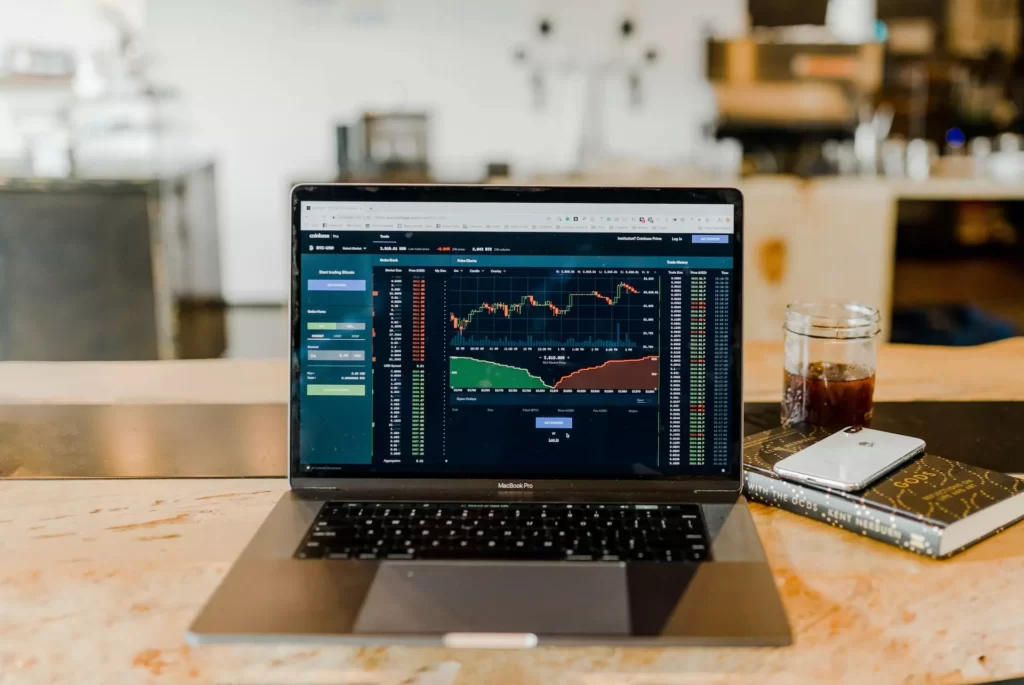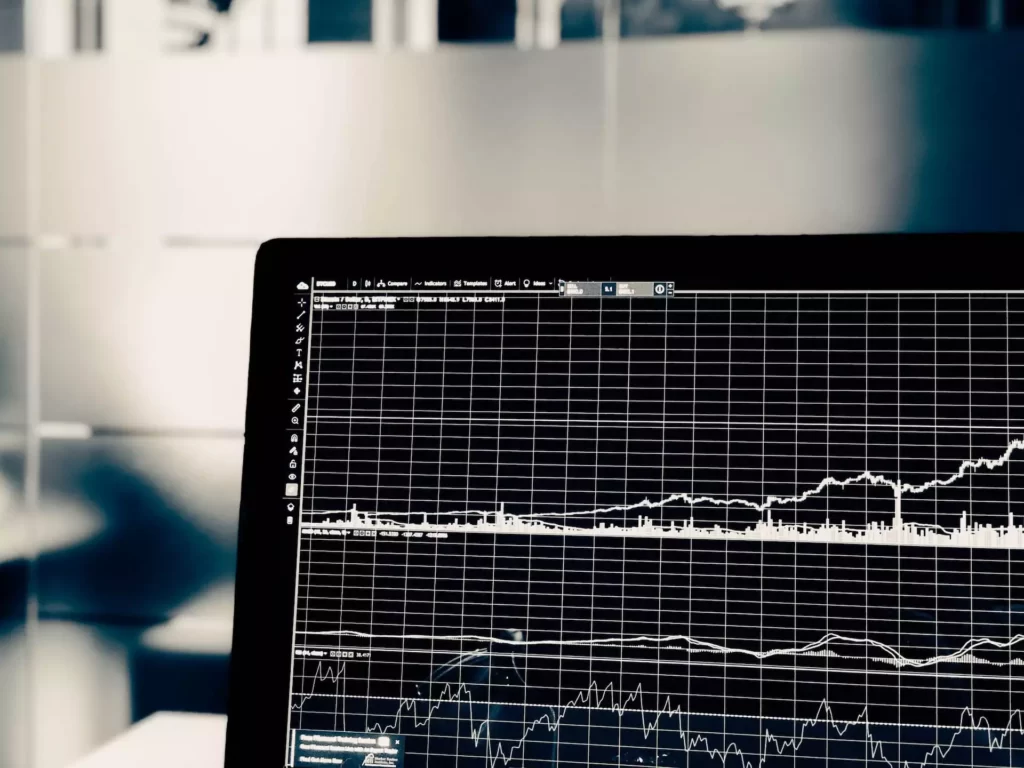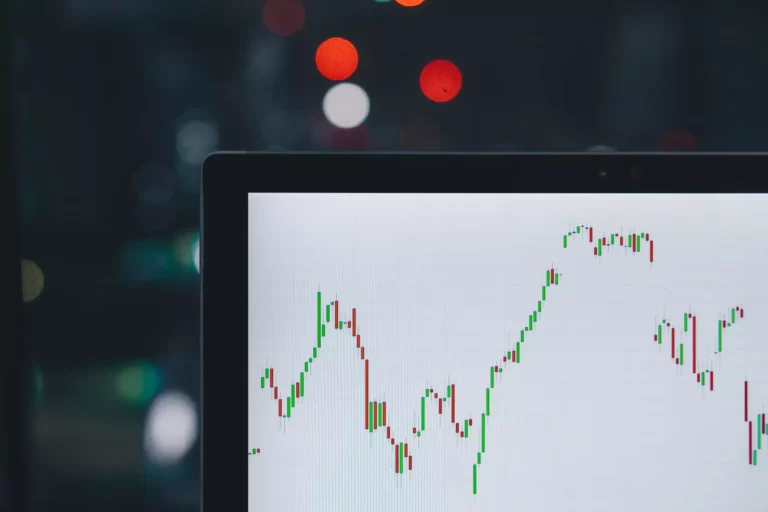Technical analysis is a way to evaluate securities by looking at market data like prices and volume from the past. Technical analysts use this data to spot patterns and trends that might hint at a security’s price direction in the future.
Technical analysis’ central tenet is that market trends, as displayed on charts and other technical indicators, can forecast future behavior.
Technical analysts think they can spot patterns and trends in historical data that can be used to make wise trading decisions.
In a Nutshell
- Technical analysis is a type of market analysis that looks for patterns and trends in the price movements of securities using historical data and technical indicators.
- Technical analysis is frequently used by traders and investors to make wise investment decisions because it can offer useful information about the potential future direction of a security.
- Moving averages, oscillators, and volume indicators are a few popular technical indicators. These indicators can support signals from other indicators, identify potential entry and exit points, and help traders and investors avoid false signals.
- Technical analysis does, however, have some drawbacks and critics, such as the possibility of false signals and self fulfilling prophecies. Trading and investing professionals should use multiple indicators and time frames, be aware of technical analysis’ potential drawbacks, and use technical analysis as part of a more comprehensive investment strategy to get around these limitations.
- Traders and investors should keep learning about the different technical indicators and how to use them over different time frames if they want to make the most of technical analysis. Additionally, they ought to think about including technical analysis in their larger investment strategy and be knowledgeable about its potential drawbacks.
Technical analysis is based on the idea that a security’s price and volume trends tell you everything you need to know about it. This means that technical analysts don’t try to figure out what a security is really worth or what the company it represents stands for.
Instead, they only concentrate on market data, searching for patterns and trends that might predict future changes in the security’s price. Technical analysis is a way to evaluate stocks by looking at past market data to find patterns and trends that can be used to predict how prices will change in the future.
Key Concepts and Terminology
The market trend, or the direction that a security’s price is moving, is one of the fundamental ideas of technical analysis. Trends may be upward, downward, or sideways. Trends are used by technical analysts to find potential buying or selling opportunities.
Chart patterns, which are illustrations of a security’s price data, are frequently used to spot trends. These patterns can reveal a trend’s strength and direction, as well as potential levels of support and resistance. The head and shoulders, double top and bottom, and triangle are a few typical chart patterns.
Another essential idea in technical analysis is the concept of support and resistance levels. These are the price ranges where a security’s price is likely to be under heavy buying or selling pressure. Typically, support levels are lows where the price of the security is likely to recover and rise further. Contrarily, resistance levels are thought of as price ceilings, where the security’s price is likely to bounce back and keep falling.
To find levels of support and resistance, technical analysts employ a variety of instruments and methods, including pivot points, moving averages, and trend lines. These levels can offer crucial hints about potential price movements for a security, assisting traders and investors in making better decisions about when to buy or sell.
Utilizing technical indicators is a key aspect of technical analysis. Mathematical formulas known as technical indicators are used to analyze market data and pinpoint trends, levels of support and resistance, and other crucial details. Moving averages, oscillators, and volume indicators are a few popular technical indicators.
Technical indicators can offer insightful data about a security’s price alterations and potential future course. For instance, oscillators and moving averages can both be used by traders to determine overbought and oversold levels as well as the direction of a trend.
Technical analysts frequently employ a number of indicators to validate signals and weed out false signals. A trader might, for instance, use a moving average to determine a trend’s direction before using an oscillator to confirm the signal and pinpoint potential entry and exit points.
The idea that past price movements can predict future price movements is another essential tenet of technical analysis. Technical analysts think they can spot patterns and trends in historical data that can be used to make wise trading decisions.
This idea is based on the idea that price and volume trends in the market reflect all pertinent information about a security. This implies that technical analysts do not make an effort to evaluate a security’s intrinsic value or the core values of the company it represents. Instead, they only concentrate on market data, searching for patterns and trends that might predict future changes in the security’s price.
To understand how technical analysis functions and how it can be used to make wise trading decisions, it is crucial to understand its fundamental ideas and principles. By employing these ideas and guidelines, traders and investors can learn crucial details about potential price changes in a security and seize buying and selling opportunities.
History of Technical Analysis
Technical analysis has its roots in the 18th century, when Japanese rice traders used charts to study market trends and decide which trades to make. Technical analysis became a widely used technique for evaluating stocks in the 19th century after being later adopted by Western traders.
Charles Dow, the founder of Dow Jones & Company and the person responsible for the Dow Jones Industrial Average, was one of the early pioneers of technical analysis. Technical analysts use support and resistance levels, a concept developed by Dow, to pinpoint potential price turning points for stocks.
Ralph Nelson Elliott, the inventor of the Elliott wave theory, is another significant figure in the development of technical analysis. This theory contends that patterns in price data, such as waves and cycles, can be used to predict market trends. Technical analysts still frequently employ Elliott wave theory today.

The development of new technical indicators and the growing use of computers to analyze market data during the 20th century contributed to the continued evolution of technical analysis. Today, traders and investors all over the world use technical analysis as a common method of stock evaluation.
Popular Technical Indicators
One of the most popular technical indicators in technical analysis is the moving average. A moving average is a statistical metric that averages a security’s price over a specified time frame, like 20 or 50 days.
Moving averages are used to identify trends and smooth out short term price fluctuations. Simple moving averages (SMAs), exponential moving averages (EMAs), and weighted moving averages are some of the different types of moving averages (WMAs).
SMAs are calculated by adding up a security’s closing prices over a predetermined amount of time, then dividing by the total number of periods. For instance, adding the closing prices of a security over the previous 20 days and dividing by 20 would be used to calculate a 20 day SMA.
The game of speculation is the most uniformly fascinating game in the world. But it is not a game for the stupid, the mentally lazy, the person of inferior emotional balance, or the get rich quick adventurer. They will die poor.”
Jesse Livermore
SMAs and EMAs are similar, but EMAs emphasize recent prices more. As a result, EMAs are more sensitive to sudden changes in price than SMAs. EMAs are calculated using a specific formula that considers both the current price and the security’s previous EMA.
Similar to EMAs, WMAs give greater weight to the average prices over the period being studied. As a result, WMAs are less susceptible to sudden changes in price than EMAs. WMAs are computed using a particular formula that accounts for the weighting given to each price during the relevant period.
Moving averages are frequently used to determine a trend’s direction, validate signals from other technical indicators, and pinpoint potential levels of support and resistance. For instance, it can be interpreted as a bullish signal that a security is in an uptrend if its price is above its 20 day SMA.
Another popular type of technical indicator is oscillators. Technical indicators called oscillators swing between two extreme values, such as 0 and 100. As well as confirming signals from other technical indicators, these indicators are used to spot overbought and oversold levels.
The Moving Average Convergence Divergence (MACD), the Stochastic Oscillator, and the Relative Strength Index (RSI) are examples of common oscillators (MACD).
The RSI is determined by comparing the size of a security’s recent gains to its recent losses using a specific formula. The RSI has a 0 to 100 scale. A security is overbought if the value is above 70, and oversold if the value is below 30.
Similar to the RSI, the stochastic oscillator calculates the indicator using closing prices as opposed to gains and losses. From 0 to 100 define the stochastic oscillator’s range. A security is overbought when the value is above 80, and oversold when the value is below 20.
A technical indicator called the MACD depicts the relationship between two moving averages of the price of a security. The 26 day EMA is subtracted from the 12 day EMA to calculate the MACD. A signal line, which is a 9 day EMA of the MACD, is frequently used in conjunction with the MACD.
Oscillators are frequently used to identify potential entry and exit points as well as to confirm signals from other technical indicators. For instance, if a security’s price is rising and the RSI is higher than 70, this can be interpreted as a bearish signal, meaning that the security is overbought and may soon experience a correction.
Technical indicators called volume indicators gauge how much a security is traded. In technical analysis, volume is crucial because it can reveal the level of interest in a security and give hints about potential price movements.
OBV (on balance volume) and Chaikin money flow are examples of common volume indicators (CMF).
By adding the volume of bullish days and deducting the volume of bearish days, the overall volume of a security (OBV) is calculated. OBV is used to determine potential levels of support and resistance as well as to confirm the trend’s direction.
The CMF is comparable to the OBV but also considers the security’s closing price in addition to its volume. The difference between the security’s closing price and its average price over a specific time period is multiplied by the volume of the security to determine the CMF. To find potential buying and selling opportunities, the CMF is used.
Moving averages, oscillators, and volume indicators are typically used technical indicators that can offer insightful data on a security’s price gyrations and potential future direction. Traders and investors can use these indicators to help them decide when is the best time to buy or sell a security.
Combining Technical Indicators
Combining various technical indicators when using technical analysis is crucial for obtaining a more complete picture of market trends and for improving trading decisions. This is so that traders and investors can obtain a more comprehensive picture of the market. Different indicators can offer various viewpoints on the price movements of a security.
A trader might, for instance, use a moving average to determine a trend’s direction before using an oscillator to confirm it and pinpoint potential entry and exit points. This can assist the trader in avoiding erroneous signals and producing more precise forecasts regarding the future price movements of a security.
Utilizing various technical indicators over various time frames is another way to combine them. For instance, a trader can use a short term oscillator to pinpoint potential entry and exit points within a trend after first determining the trend’s general direction with a long term moving average.
Traders and investors can get a more complete picture of market trends and make better decisions by combining multiple indicators over various time frames.
Using multiple indicators is crucial for validating signals and avoiding false signals. This is due to the fact that no indicator is fault proof, and by using multiple indicators, traders and investors can avoid being duped by erroneous signals.
For instance, if a trader notices a bullish signal on a moving average but the stock’s RSI shows that it is overbought, he or she may decide to hold off on entering the market until conditions are more favourable. This can help the trader increase his chances of success and prevent expensive mistakes.
Technical analysis generally includes the combining of various technical indicators and the use of them on various time frames. Traders and investors can gain a more complete understanding of market trends and make better decisions in this way.

Limitations and Criticisms of Technical Analysis
Combining various technical indicators when using technical analysis is crucial for obtaining a more complete picture of market trends and for improving trading decisions. This is so that traders and investors can obtain a more comprehensive picture of the market. Different indicators can offer various viewpoints on the price movements of a security.
The potential for false signals is one of technical analysis’ major drawbacks. This is so because technical indicators, which are based on historical data, frequently predict past price movements incorrectly.
A moving average, for instance, might show that the price of a security is rising while the trend is actually downward. The trader who relied on the moving average would have made a losing trade in this scenario because it provided a false signal.
The likelihood of prophecies coming true is another drawback of technical analysis. This is due to the fact that traders and investors who use technical indicators may have an impact on them.
For instance, if many traders decide to purchase a security after noticing a bullish signal from a technical indicator, the price of the security may increase. The technical indicator would have been accurate in this case, but only because the traders who used it had an impact on the security’s price.
Technical analysis is also criticized for working under the presumption that past price movements can predict future price movements. Technical indicators may not always be accurate, and this assumption may not always hold true.
Overall, technical analysis has drawbacks and limitations even though it can be a useful tool for investors and traders. These restrictions must be understood by traders and investors who use technical analysis as part of a larger investment strategy.
Utilizing technical analysis as a component of a larger investment strategy that includes other types of analysis, such as fundamental analysis, is one way to get around technical analysis’s limitations. Traders and investors can get a more comprehensive picture of a security’s price movements and its likely future direction by combining technical and fundamental analysis.
Utilizing a variety of indicators and time frames is another way to get around technical analysis’ drawbacks. As was already mentioned, using multiple indicators can aid traders and investors in avoiding erroneous signals and obtaining a more thorough understanding of market trends. A more complete picture of a security’s price changes and potential future direction can be obtained by using multiple time frames.
Additionally, it is crucial for traders and investors to be aware of the possibility of self fulfilling prophecies and to refrain from acting solely on the basis of technical indicators.
Before making decisions based on technical indicators, for instance, traders and investors should take into account a security’s underlying fundamentals and its larger market trends.
Overall, traders and investors can get around technical analysis’ potential drawbacks and use it to make better investment decisions by incorporating it into a larger investment strategy and being aware of its limitations.
Applications of Technical Analysis in the Real World
In conclusion, technical analysis is a type of market analysis that looks for patterns and trends in the prices of securities using historical data and technical indicators. Technical analysis is frequently used by traders and investors to make wise investment decisions because it can offer useful information about the potential future direction of a security.
Moving averages, oscillators, and volume indicators are a few popular technical indicators. These indicators can support signals from other indicators, identify potential entry and exit points, and help traders and investors avoid false signals.
Technical analysis does have some problems and critics, like the possibility of false signals and prophecies that come true on their own. Trading and investing professionals should use multiple indicators and time frames, be aware of technical analysis’ potential drawbacks, and use technical analysis as part of a more comprehensive investment strategy to get around these limitations.
In the real world, traders and investors frequently use technical analysis to decide which investments to make. Identifying potential entry and exit points, validating signals from other indicators, and avoiding false signals are some of its most advantageous uses. Trading and investing professionals can better understand market trends and decide when to buy or sell securities by using technical analysis.
Wrap Up
For traders and investors who want to better understand market trends and make more knowledgeable investment decisions, technical analysis is a useful tool. Technical analysis can help traders and investors identify potential entry and exit points, confirm signals from other indicators, avoid false signals, and identify potential future directions of a security, despite its limitations.
Traders and investors should keep learning about the different technical indicators and how to use them over different time frames if they want to make the most of technical analysis. Additionally, they ought to think about including technical analysis in their larger investment strategy and be knowledgeable about its potential drawbacks.
Traders and investors can improve their chances of success and make better choices about when to buy or sell securities by continuing to learn about technical analysis and incorporating it into their own investment strategies.
FAQs

Technical analysis is a type of market analysis that looks for patterns and trends in the price movements of securities using historical data and technical indicators.
It is predicated on the notion that a security’s price accurately reflects all pertinent information about it and that historical patterns and trends can reveal important information about a security’s potential future course.
Technical indicators, chart patterns, statistical analysis, and other methods are used by technical analysts to spot patterns and trends in the price movements of securities.
Traders and investors can better understand the potential future direction of a security by performing in depth technical analysis, and they can use this knowledge to make more informed trading decisions.
Technical analysis has a number of key benefits, including the following:
– It can give traders and investors useful information about the potential future direction of a security and assist them in locating potential entry and exit points.
– It can assist traders and investors in validating signals from other indicators and avoiding erroneous signals.
– It can assist investors and traders in creating a reliable trading strategy and lessen the influence of emotions and biases.
– It can assist investors and traders in minimizing the effects of news and market developments and concentrating on the underlying price action.
Technical analysis has several major drawbacks, including the following:
– Because it is based on historical data, it does not account for upcoming events or changes in the market.
– It is open to interpretation, which opens it up to different viewpoints and biases.
– It is susceptible to self fulfilling prophecies, whereby investors and traders act on technical signals to produce the desired results.
– Certain types of securities, such as derivatives or exotic securities, can be challenging to analyze using technical methods.
Traders and investors can take into consideration the following to get around the limitations of technical analysis:
– To confirm signals and lessen subjectivity and bias, use a variety of indicators and time frames.
– Keep up with market and news developments and think about how they might affect stock prices.
– Incorporate technical analysis into a larger trading strategy along with other elements like fundamental analysis and market sentiment.
Article sources
At Capital Maniacs, we are committed to providing accurate and reliable information on a wide range of financial topics. In order to achieve this, we rely on the use of primary sources and corroborated secondary sources to support the content of our articles.
Primary sources, such as financial statements and government reports, provide firsthand evidence of financial events and trends. By using primary sources, we are able to directly reference information provided by the organizations and individuals involved in these events.
Secondary sources, such as financial analysis and commentary, interpret and analyze primary sources. While these sources can be useful for providing context and background information, it is important to use corroborated sources in order to ensure the accuracy and reliability of the information we present.
We take pride in properly citing all of our sources, both primary and secondary, in order to give credit to the original authors and to allow our readers to verify the information for themselves. We appreciate your trust in our website and are committed to upholding the highest standards of financial journalism.
- Technical Analysis of the Financial Markets – John J. Murphy
- Technical Analysis for Dummies – Barbara Rockefeller
- The Encyclopedia of Technical Market Indicators – Robert W. Colby
- Technical Analysis from A to Z – Steven B. Achelis
- Technical Analysis Explained – Martin J. Pring



















